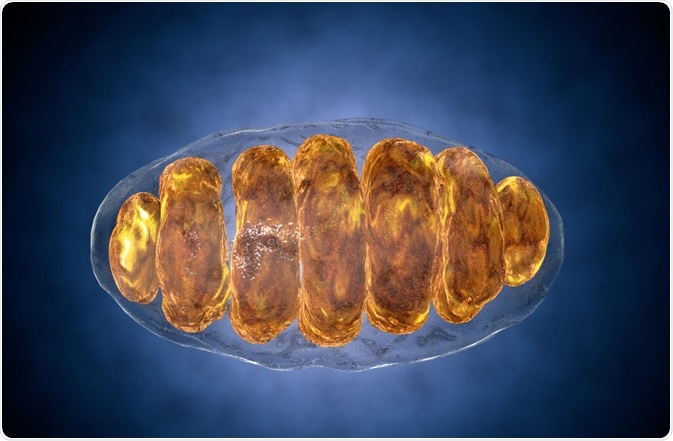Mitochondria are the organelles responsible for producing cellular energy in the form of ATP. They contain mitochondrial DNA (mtDNA) that is approximately 16,500 base pairs in size and is unique to an individual. This makes mtDNA useful in forensic science when DNA is damaged or degraded.
 Forensics" />Image Credit: Pavel Chagochkin/Shutterstock.com
Forensics" />Image Credit: Pavel Chagochkin/Shutterstock.com
mtDNA is highly conserved, meaning that, although it does undergo recombination, it recombines with what should be identical copies of itself. However, the mutation rate of mtDNA is as ten fold higher than that of nuclear DNA. This property makes it extremely useful for establishing the evolution of species over many generations through the matrilineal line.
The mtDNA genome has been entirely sequenced for many species and groups of humans from a wide variety of ethnic groups. It is double-stranded, just like nuclear DNA, though it is arranged into a circular loop conformation.
In humans, it encodes 13 polypeptides, two ribosomal RNAs, and 22 transfer RNAs, most of which take part in oxidative phosphorylation. In this process, a proton gradient is maintained across a membrane to drive the phosphorylation of ADT to ATP, the main energy source of cells.
In humans, each cell contains up to 2,000 mitochondria. Thus, mtDNA samples are often easier to obtain than nuclear DNA. This is particularly true in forensic science, where investigators may be working with largely decayed bodies where only the teeth, bones, or hair is available. mtDNA was used as evidence for the first time in US courts in 1998, and it has since become a staple in many cases where DNA evidence is presented.
How are mtDNA samples matched?
mtDNA can be divided into three major regions: the coding, and highly variable HVR1 and HVR2 regions. mtDNA is compared to a known reference sequence to return the differences between them in the form of a list of single-nucleotide polymorphisms.
Usually, one or both of the HVR1 and HVR2 regions are sequenced, as these are far more specific to an individual than the coding region, which is highly conserved.
Polymerase chain reaction (PCR) amplification is usually carried out on a sample of mtDNA to increase the amount of DNA available for analysis, followed by techniques such as Sanger sequencing.
Criticisms of mtDNA in criminal law
Unlike nuclear DNA, which is completely unique to an individual (outside of identical siblings), mtDNA sequences are frequently identical between different people. The occurrence of a match between a person’s mtDNA and mtDNA found at a crime scene only implies their presence there, rather than confirming it. Defense attorneys have argued that this difference between nuclear DNA and mtDNA may lead jurors to misunderstand the certainty of a test.
In addition, maternally related individuals usually have the entire mtDNA sequence in common, meaning it is impossible to distinguish between their mtDNA samples.
Further Reading